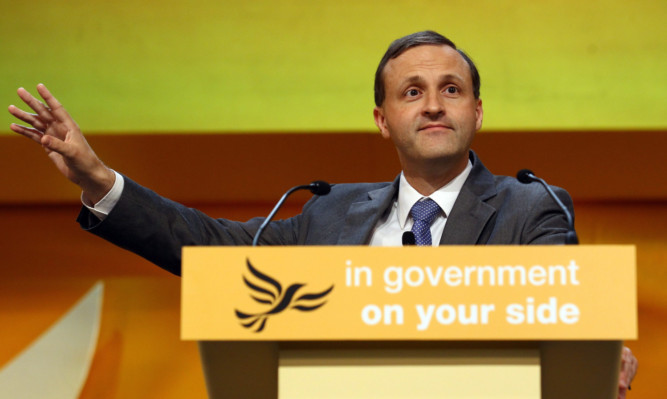
An independent Scotland would have to find billions of pounds to shore up a black hole in the country’s public sector pensions, a coalition minister has warned.
Pensions minister Steve Webb has called on the SNP to explain how the growing gap between the money paid out and contributions to the schemes would be plugged without Treasury support.
The Lib Dem minister unveiled new figures showing that by 2017/18 the UK Government will be pumping nearly £1 billion a year into the pension pot for more than 400,000 serving or retired teachers and NHS workers north of the border.
“Remember this is just one of the schemes operating in Scotland,” he said, “and the annual shortfall has gone up from £300 million to £900 million in the space of just six years.
“That is one heck of a hole so where is that money going to come from.
“If you were a retired teacher or nurse in Scotland, the question you would want answering is who is going to make that shortfall up?
“And, indeed, if you are working teacher or nurse, you want to know if it’s you who’s going to have to make that up. I don’t know what the answer to that question is that is for the SNP to address. But, clearly, at the moment we know exactly where that money comes from.
“From a UK point of view, there is clearly a much broader tax base which obviously helps to plug these gaps.”
The annual shortfalls in the NHS and teaching schemes are part of unfunded liabilities totalling £60 billion in Scotland’s public sector pensions.
But the problem is dwarfed by the UK’s overall public pension liabilities which are £893 billion.
The Scottish Government will launch its pensions paper in the next few months and one of the biggest issues the paper will have to address is the effect of independence on private pensions.
Industry experts have warned that private firms trading on both sides of the border would be forced to pay billions of pounds extra into their pension schemes straight after a Yes vote in next year’s referendum. The Institute of Chartered Accountants of Scotland said thousands of companies operating in both England and Scotland currently do not have enough assets in their schemes to meet the projected pay-outs. But this shortfall would no longer be permitted after independence due to EU solvency rules, which are “more stringent” for pension schemes that operate in more than one country.
The pro-independence camp has so far claimed there could be a deal struck on this issue but Webb said: “My understanding is that you will have to fill the deficit in a couple of years.
“But then it is not even obvious if a government fills the hole in private companies’ pension schemes how they could claw that back at a later stage.”
The Lib Dem minister also had a warning for those coming up to retirement age. He said: “We often get criticised for changing something for someone who is not far off pensionable age, say early to late fifties. But independence throws up so much uncertainty on pensions.
“You’ve got to be confident of gaining a hell of a lot if you are taking on all that uncertainty. It is hard normally to get people interested in pensions but it does seem to be a clear example of where there is an undeniable benefit in a of a single system.
“I truly find it hard to see how people get better pensions from splitting the UK.”
Around 16,000 Scots currently get their retirement income paid by the Pensions Protection Fund which is paid for by a levy on the UK industry to pay the pensions of retired workers from bankrupt companies.
A spokeswoman for Deputy First Minister Nicola Sturgeon said she will be setting out how they intend to fill the growing pensions black hole “shortly”. She added: “The cost of NHS and teachers’ pensions is well understood and fully factored into Scottish Government financial estimates.
“We recognise the importance of having an effective pension system which works for everyone in Scotland which is why we are shortly issuing detailed proposals setting out how pensions will operate following independence.”

Enjoy the convenience of having The Sunday Post delivered as a digital ePaper straight to your smartphone, tablet or computer.
Subscribe for only £5.49 a month and enjoy all the benefits of the printed paper as a digital replica.
Subscribe